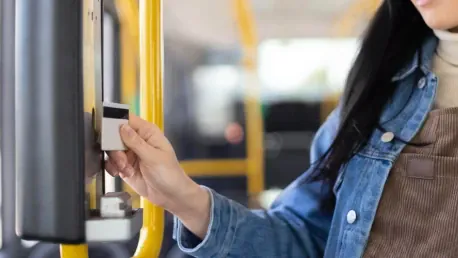Amidst the vibrant streets of Baltimore, a silent crisis is unfolding as thousands of students struggle with a public transit system that regularly fails them. The investigation by The Baltimore Banner highlights a troubling reality: around 25,000 students depend on an unreliable public transportation network for their daily school commutes. This systemic failure is more than an inconvenience—it threatens to derail their education, leading to chronic tardiness and absenteeism that significantly impact their academic performance. For these students, the journey to school is fraught with delays, missed connections, and safety concerns, creating an environment where arriving on time is an exception rather than the norm.
Extent of the Issue
Baltimore’s public transit system is far from efficient, and for the 25,000 students relying on it, their school day often starts with a battle against time and uncertainty. These students, aged as young as 11, are forced to navigate a maze-like transportation network that lacks reliability and predictability. Unlike other regions in Maryland where yellow school buses are provided up to the twelfth grade, Baltimore City Public Schools discontinue this service after the fifth grade. As a result, young children are compelled to rely on public buses, a situation that significantly lengthens their daily commutes and adds layers of complexity to their school journey.
On average, a Baltimore city student spends about 40 minutes commuting to school using public transit, which is more than twice the duration of their counterparts in the counties who utilize yellow school buses. Adding to this, the necessity for multiple transfers heightens the risk of extending commute times whenever a connection is missed or a bus is delayed. The impact of this unpredictability is starkly visible in classrooms, especially in first-period classes where tardiness is most prevalent. Data indicates that failure rates are 6.6 percentage points higher in these early classes compared to the rest of the school day, underscoring the academic toll of the transit issues.
Transportation Challenges
The journey for Baltimore students is not merely about delays and long waits; it involves navigating through potentially hazardous environments. The conditions during their commute often expose them to unsafe situations, including sexual harassment and violent altercations. These students start their commutes in the predawn hours and return home after dusk, periods known for reduced visibility and increased risks, further amplifying their sense of insecurity. For disadvantaged students, the reality is even bleaker. While families with means can afford safer alternatives such as ridesharing or personal vehicles, those without such resources are left to endure the pitfalls of an unreliable public transit system. Consequently, their school choices are heavily influenced by the commute they can feasibly undertake, placing them at a distinct disadvantage compared to their peers.
Historically, Baltimore’s students enjoyed more manageable commutes when the population density was higher and streetcars offered frequent service. However, as the city’s school choice program expanded, allowing students to enroll in schools across the city, the inadequacies of the current transit system became glaringly evident. The challenge lies in the joint responsibility between the Maryland Transit Administration (MTA) and the Baltimore City school system. MTA Administrator Holly Arnold points out that federal funding limits the ability to dedicate buses exclusively for students, requiring a balance between all riders’ needs. Meanwhile, the school system, under the leadership of CEO Sonja Santelises, has not prioritized addressing this transportation crisis, leading to prolonged and pervasive disruption in students’ lives.
Responsibility and Accountability
Addressing Baltimore’s transit woes requires more than recognizing the problem; it necessitates a comprehensive commitment to finding solutions. CEO Sonja Santelises has acknowledged the school system’s partial responsibility for the transportation issues but admits that little priority has been given to resolving them during her nine-year tenure. The inadequacies of the transit system not only disrupt academic schedules but also carry significant emotional and safety consequences. Parents like Tierra Bourne have shared firsthand accounts of their children’s daily ordeals, expressing frustration and a sense of helplessness. These personal stories underscore the urgent need for systemic change and better coordination among stakeholders.
Baltimore is unique within Maryland, as it is the only area where a student’s academic success is often contingent upon access to personal transportation. This arrangement exacerbates educational inequity, compelling a rethink of the current policies and infrastructure. Efforts to mitigate the issue, such as encouraging early bus boarding, have had limited success due to the overall infrequency and unpredictability of the transit services. Even as some schools attempt innovative measures to ease the burden, the fundamental problem of transit reliability remains unaddressed, perpetuating the cycle of academic and emotional hardship for many students.
Socioeconomic Disparity
The systemic failures of Baltimore’s public transportation ripple through the daily lives of its students, creating deep-rooted challenges to their right to education. The bus system’s unreliability is compounded by unpredictable wait times and missed connections, adding significant stress and uncertainty to their daily routines. The narrative of students like Brooke Bourne reflects these challenges, showing how their academic goals and emotional well-being suffer due to protracted and stressful commutes.
Baltimore’s public transit infrastructure is not designed to handle the daily influx of students, leading to regular delays and increased absenteeism. This starkly contrasts with the idea of school choice, which is rendered ineffective when access to chosen schools is practically impossible. Furthermore, the lack of coordinated accountability between the school system, MTA, and state officials has resulted in a cycle of blame without tangible resolution. The disparity becomes even more pronounced as wealthier families can circumvent these issues through ridesharing or owning personal vehicles, while disadvantaged students remain stuck with limited and poor options, widening the educational inequality gap.
Urgency for Action
Amid the vibrant streets of Baltimore, a silent crisis is brewing as thousands of students grapple with a public transit system that consistently fails them. An investigation by The Baltimore Banner has brought to light a concerning reality: approximately 25,000 students rely on an unreliable public transportation network for their daily school commutes. This systemic failure is more than just an inconvenience; it holds the potential to derail their education entirely. Chronic tardiness and absenteeism stemming from this unreliable transportation significantly impact their academic performance. For these students, the journey to school is plagued by delays, missed connections, and safety concerns, creating a scenario where arriving on time is more of a rarity than a customary occurrence.
Students are often left waiting for buses that never show up or must navigate multiple transfers, increasing the likelihood of lateness. Moreover, the anxiety of traveling through dangerous neighborhoods compounds their stress and distracts from their academic focus.
The broader implications of this issue cannot be ignored. It poses a substantial threat to the future prospects of these young minds, as consistent attendance is crucial for academic success. Without immediate and effective interventions, Baltimore’s students may find it increasingly difficult to break free from the cycle of educational disruption caused by the city’s failing public transit system.









